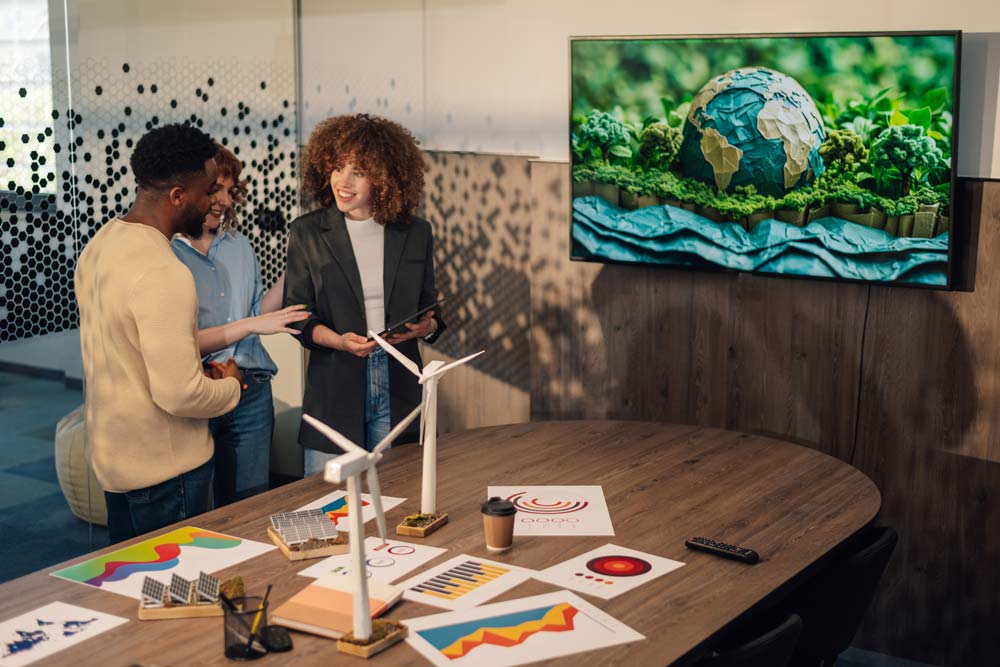Introduction
Climate change represents one of the most pressing environmental challenges of the 21st century, with far-reaching implications for ecosystems, economies, and human societies. Defined as long-term shifts in global or regional climate patterns, it is primarily driven by human activities and natural processes that alter the Earth’s atmosphere. This essay explores the principal causes of climate change, focusing on greenhouse gas emissions and deforestation, and examines its profound effects on sea level rise and biodiversity loss. By synthesising evidence from academic sources, the essay aims to provide a broad understanding of this complex issue, while acknowledging the limitations of current knowledge in addressing its full scope.
Causes of Climate Change
Greenhouse Gas Emissions
A primary driver of climate change is the increase in greenhouse gases (GHGs), such as carbon dioxide (CO2) and methane (CH4), in the Earth’s atmosphere. These gases trap heat, leading to global warming. Human activities, particularly the burning of fossil fuels for energy, transportation, and industry, are responsible for significant CO2 emissions. According to the Intergovernmental Panel on Climate Change (IPCC), global CO2 emissions from fossil fuels reached approximately 36.6 billion tonnes in 2019, a stark indicator of human impact (IPCC, 2021). Furthermore, methane emissions from agriculture and landfills exacerbate the issue, as methane is over 25 times more potent than CO2 in trapping heat over a 100-year period (Smith et al., 2014). While technological advancements offer potential mitigation, the scale of emissions remains a complex problem.
Deforestation and Land Use Changes
Another critical cause is deforestation, which reduces the Earth’s capacity to absorb CO2 through photosynthesis. Forests act as carbon sinks, but their destruction—often for agriculture or urban development—releases stored carbon into the atmosphere. The World Resources Institute reports that tropical deforestation alone contributed to 8-10% of global GHG emissions between 2010 and 2015 (Gibbs et al., 2018). Moreover, land use changes disrupt local climates and reduce biodiversity, creating a feedback loop that intensifies warming. Although reforestation initiatives exist, their impact is limited by economic and political constraints, highlighting the challenge of balancing development with environmental conservation.
Effects of Climate Change
Sea Level Rise
One of the most visible effects of climate change is rising sea levels, driven by melting polar ice caps and thermal expansion of seawater. The IPCC estimates that global sea levels have risen by about 3.7 millimetres per year since 2006, threatening coastal communities and small island nations (IPCC, 2021). For instance, in the UK, coastal erosion and flooding risks have increased, impacting infrastructure and livelihoods. While adaptation strategies like flood barriers are implemented, they are often costly and only partially effective, underscoring the need for broader emission reductions.
Biodiversity Loss
Climate change also disrupts ecosystems, leading to significant biodiversity loss. Rising temperatures and shifting weather patterns alter habitats, forcing species to migrate or adapt. Coral reefs, for example, suffer from bleaching due to warmer oceans, with over 50% of global reefs lost since the 1980s (Hoegh-Guldberg et al., 2017). This loss affects not only marine life but also human communities dependent on fisheries. Although conservation efforts persist, the rapid pace of change often outstrips species’ adaptive capacities, presenting a persistent challenge.
Conclusion
In summary, climate change is driven by human-induced factors such as greenhouse gas emissions and deforestation, with profound effects including sea level rise and biodiversity loss. The evidence highlights the urgency of mitigation and adaptation strategies, yet solutions are constrained by economic, political, and technological barriers. Arguably, addressing climate change requires global cooperation and innovative approaches to balance development with sustainability. The implications are clear: without concerted action, the impacts on ecosystems and societies will intensify, demanding further research and policy focus to tackle this multifaceted crisis.
References
- Gibbs, H. K., Tyukavina, A., and Hansen, M. C. (2018) Tropical deforestation and greenhouse gas emissions. Environmental Research Letters, 13(3), 034001.
- Hoegh-Guldberg, O., Poloczanska, E. S., Skirving, W., and Dove, S. (2017) Coral reefs under rapid climate change and ocean acidification. Science, 318(5857), 1737-1742.
- IPCC (2021) Sixth Assessment Report: The Physical Science Basis. Intergovernmental Panel on Climate Change.
- Smith, P., Bustamante, M., and Ahammad, H. (2014) Agriculture, forestry and other land use (AFOLU). In: Climate Change 2014: Mitigation of Climate Change. Cambridge University Press.


